I grow organically for a healthy and safe food supply, for a clean and sustainable environment, for an enjoyable and rewarding experience.
Lettuces and greens are some of the easiest greens to grow and best of all you can plant them before summer crops like tomatoes and then you can plant them after the tomatoes are finished.
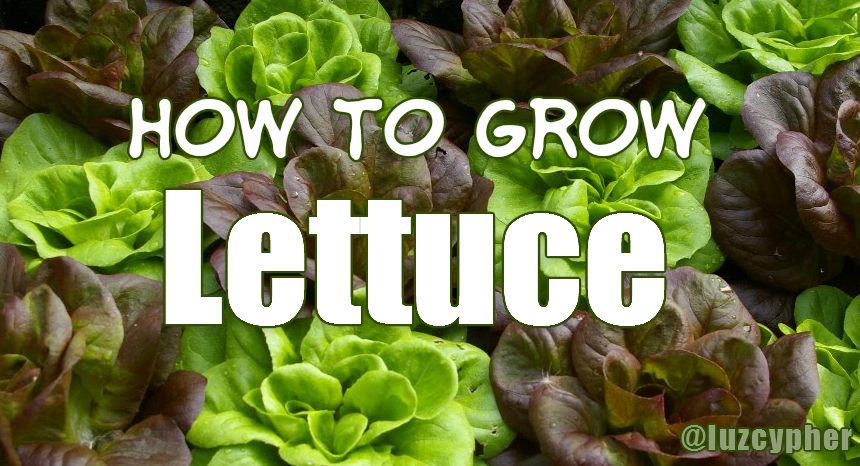
These are the four main types of lettuces in order from easiest to grow to hardest to grow:
- loose leaf
- cos or romaine
- butter head or bibb
- and crisphead like an iceberg.

I want my butter head and my romaine to get off to a good start so I'm going to start those in trays in the greenhouse.
Start your lettuces and greens in trays about four weeks before you wanna transplant outside into the garden and they like daytime temperatures between forty-five and sixty -ive degrees.
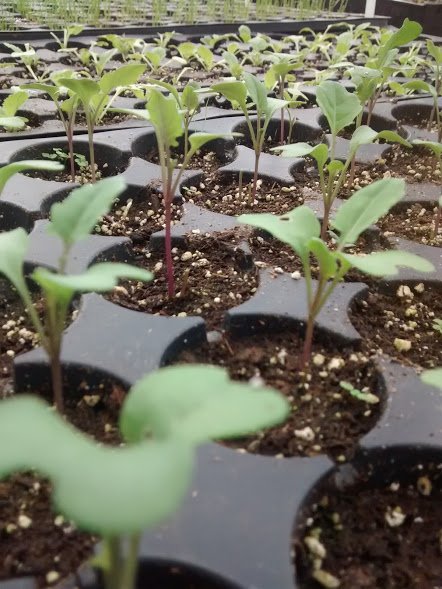
Plant your transplants or sow your seed at least a month before the hot weather of summer sets in. I'm sowing a few seeds into each cell cover lightly with soil about a quarter of an inch deep for the lettuce and about a half an inch deep for the greens make sure and keep the seeds evenly moist.
While my seeds are germinating and growing inside the greenhouse, I'm going to prepare my lettuce bed.
Lettuces like full sun except in the summertime and if you're in a hot climate you probably gonna need some shade.
Lettuces like a pH of 6 to 6.8. It does not tolerate a pH lower than 6. So you may want to do a pH test on your lettuce bed.
Work in a nice balanced vegetable fertilizer or compost into the top three inches of soil and any lime you might need to raise the pH.
Loose leaf lettuce is one of the easiest to grow so I'm going to seed it directly into the garden bed, this is called direct sowing.
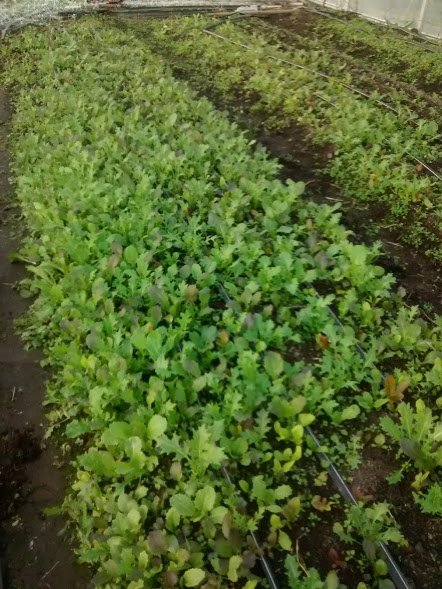
Greens like arugula, mash, mustard, and tatsoi, have the same cultural requirements as loose leaf lettuce so if you're growing greens or a mix follow the same steps.
Make sure you have a level and cleaned seed bed, lettuce is a small seed and large clods in the soil will not give you good seed to soil contact and it can reduce your germination rates.
You can succession seed lettuce every ten to fourteen days and that way you'll get a continuous supply When it comes to direct seeding loose leaf lettuce there are a couple ways you can do it.
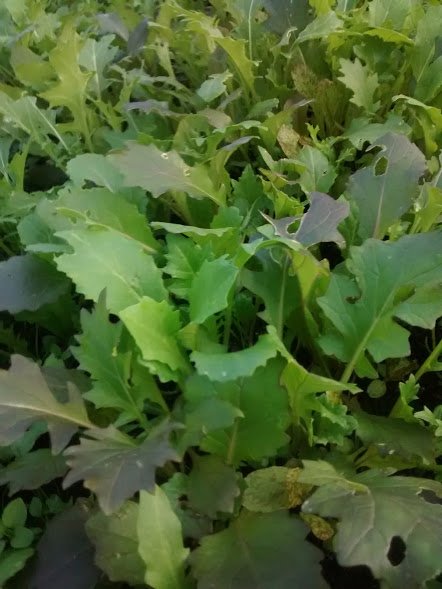
You can sow in a patch and harvest it.
You can also sow it in rows. Space your rows to about eight inches to twelve inches apart. According to the instructions on the seed pack, the planting depth should be about a quarter inch to half an inch.
Water your newly planted seeds and keep the bed evenly moist, lettuces like frequent light watering.
Now that my seedlings have sprouted it's time to thin to the strongest seedlings and I'm using these snips because I can thin without disturbing the soil.
Slugs, snails, and earwigs are the major pest of lettuce. Diatomaceous earth dusted around the leaves will kill any bugs that crawl on your lettuce and is nontoxic to humans. It also adds lots of minerals to the soil.
It's time to harvest the lettuce harvest early in the morning when the turgor pressure is at its highest, that way the leaves will stay crisp.
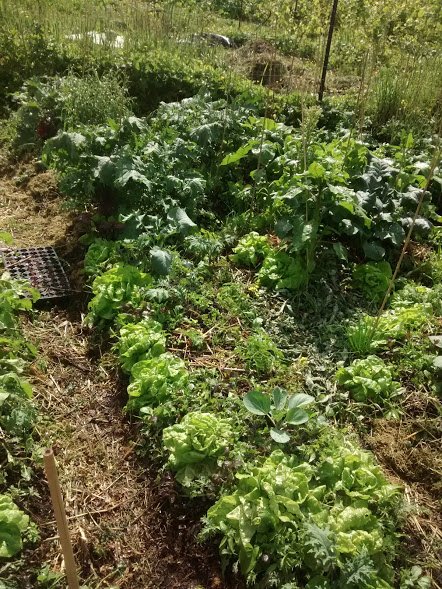
Turgor pressure is like blood pressure for plants. For your row-grown, loose-leaf lettuce, just break up the outside leaves and allow the center to grow more.
After about thirty or forty-five days you can harvest your patch of loose leaf lettuce. Using a lettuce knife or scissors simply snip the leaves off a couple inches above the soil You can usually get to three harvests like this.
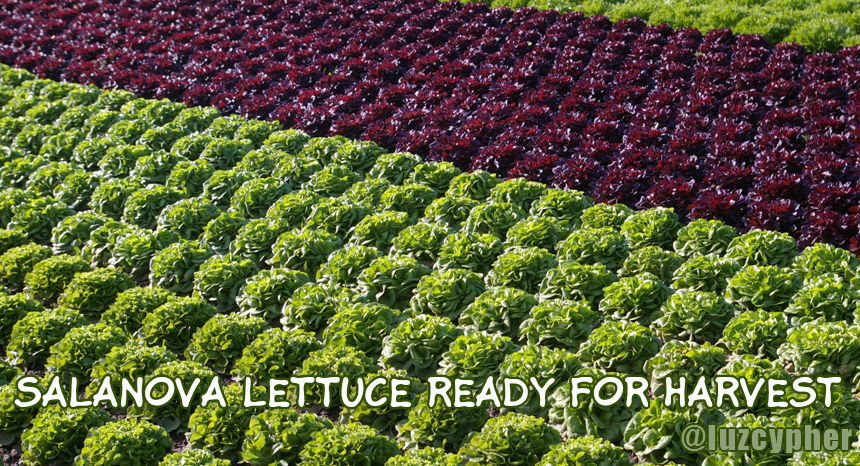
For the romaine or bibb lettuces, harvest the whole plant when it is mature. These usually take forty to fifty days to grow.
One of my favorite varieties to grow is the Salanova series by Johnny Seeds. It's a perfect lettuce to grow for the farmer's market because it's the easiest to harvest and make lettuce blends with.
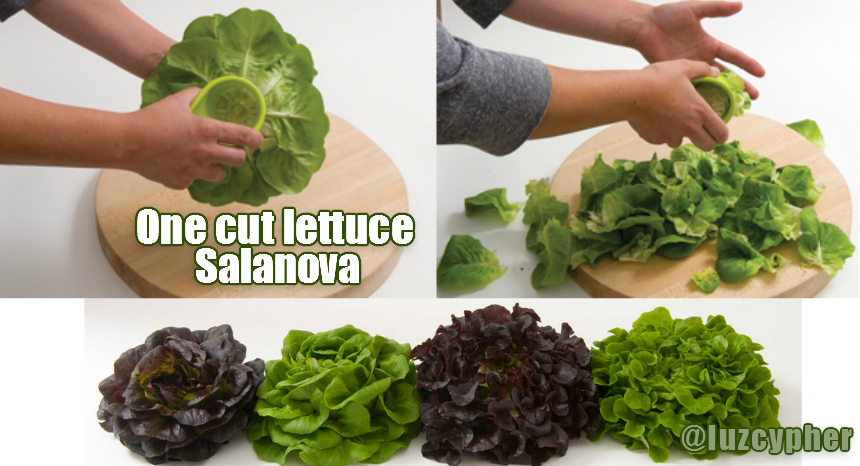
With just one cut at the base of the lettuce, the head falls into perfectly sized lettuce pieces ready for the plate and it's super productive and mold resistant.
The only downside is you have to harvest the whole head at once so for home gardening, you many want other varieties that can be harvested a few leaves at a time. This way you'll always have some fresh leaves ready to make a salad.
If you're growing for the farmer's market, though, the Salanova varieties can't be beat for production and ease of harvest and marketability.
Lettuce is an easy and satisfying crop to grow so grow your own salad and grow organic for life!.
All images are mine unless noted with a link to an image credit.
Related Posts
How To Plant And Care For Artichokes In Your Garden --- by @luzcypher
How To Plant Potatoes For A Year Round Harvest --- by @luzcypher
The Magic Of Homemade Fertilizer Feeding Your Garden With Comfrey --- by @luzcypher
Benefits Of Garlic And How To Grow It In Your Garden --- by @luzcypher

